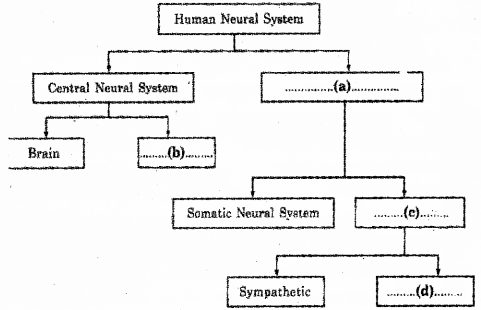Kerala Plus One Zoology Previous Year Question Paper March 2018 with Answers
| Board | SCERT |
| Class | Plus One |
| Subject | Zoology |
| Category | Plus One Previous Year Question Papers |
Time: 1 Hour
Cool off time: 10 Minutes
Maximum: 30 Scores
General Instructions to candidates:
- There is a ‘cool off time’ of 10 minutes each for Botany and Zoology in addition to the writing time of 1 hour each. Further there is a ‘5 minutes’ ‘preparatory time’ at the end of the Botany Examination and before the commencement of the Zoology Examination.
- Use the ‘cool off time’ to get familiar with the questions and to plan your answers.
- Read the instructions carefully.
- Read questions carefully before you answering.
- Calculations, figures and graphs should be shown in the answer sheet itself.
- Malayalam version of the questions is also provided.
- Give equations wherever necessary.
- Electronic devices except non-programmable calculators are not allowed in the Examination Hall.
Answer all questions from question numbers 1 to 3. Each carry one score. (3 × 1 = 3)
Question 1.
Rearrange the following taxonomic categories in the correct sequence.

Answer:
Kingdom → phylum → class → order → family → genus → species
Question 2.
Note the relationship in the first pair and then complete the second pair.
Osteichthyes : Cycloid scales
Chondrichthyes : …………
Answer:
Placoid scales
Question 3.
The innermost layer of the eyeball is …………..
a) Choroid
b) Iris
c) Retina
d) Sclera
Answer:
c) Retina
Answer any nine from question numbers 4 to 14. Each carries two scores. (9 × 2 = 18)
Question 4.
The molecular structure of 2 amino acids are given below. Name them.

Answer:
a) Serine
b) Alanine
Question 5.
Arrange the following terms under two headings based on symmetry.
Arthropods, Ctenophores, Molluscs, Coelenterates
Answer:
Radial symmetry – Coelenterates, Ctenophores
Bilateral symmetry – Arthropods, Molluscs
Question 6.
a) Expand GFR.
b) Even though GFR in a healthy person is 180 litres per day, the amount of urine released per day is only about 1.5 litres. Give a reason.
Answer:
a) Glomerular filtration rate
b) Due to tubular reabsorption 99% of filtrate is absorbed by renal tubules
Question 7.
Select the bones of the leg from the given list of bones.
Humerus, Tibia, Radius, Femur, Tarsals, Ulna, Fibula, Carpels.
Answer:
Femur, tibia, fibula, tarsals
Question 8.
Name the following:
a) The antibacterial enzyme present in the saliva of man helps in prevention of infection.
b) The digestive enzyme present in saliva.
Answer:
a) Lysozyme
b) Salivary amylase
Question 9.
Observe the diagram showing the alimentary canal of cockroach. Name the parts labelled A, B, C and D

Answer:
A – Crop
B – Hepatic cecae
C – Malpighian tubules
D – Hindgut
Question 10.
Diagrammatic representation of a standard ECG is given below:

a) What does the QRS complex denotes?
b) Mention the clinical significance of ECG.
Answer:
a) Depolarization of ventricle
b) If any deviation from normal shape, it indicates heart disease
Question 11.
Distinguish between the following:
a) IRVand ERV
b) IC and EC
Answer:
IRV – Inspiratory reserve volume
ERV – Expiratory reserve volume
IC – Inspiratory capacity
EC – Expiratory capacity
Question 12.
Complete the given flowchart

Answer:
a) Peripheral neural system
b) Spinal cord
c) Autonomic neural system
d) Parasympathetic neural system
Question 13.
Name the hormones whose deficiency is responsible for the following:
a) Dwarfism
b) Diabetes mellitus
c) Cretinism
d) Diuresis
Answer:
a) Dwarfism – growth hormone
b) Diabetes mellitus – insulin
c) Cretinism – thyroxine
d) Diuresis – vasopressin
Question 14.
Identify the following tissues:
a) Tissue that stores fat
b) Tissue that connects bones together
c) Tissue that connects bones to muscles
d) Tissue that conducts impulses
Answer:
a) Adipose tissue
b) Ligaments
c) Tendon
d) Neural tissue
Answer any three from question numbers 15 to 18. Each carries three scores. (3 × 3 = 9)
Question 15.
Match the terms in column A with those in columns B and C.
| A | B | C |
| a) Neutrophils | 2 – 3% | Immune response |
| b) Eosinophils | 20 – 25% | Phagocytic |
| c) Lymphocytes | 60 – 65% | Allergic reaction |
Answer:
| a) Neutrophils | 60 – 65% | Phagocytic |
| b) Eosinophils | 2 – 3% | Allergic reaction |
| c) Lymphocytes | 20 – 25% | Immune response |
Question 16.
a) Complete the diagrammatic representation showing the nature of enzyme action:
![]()
b) List out any two factors affecting enzyme activity.
c) Based on the reaction formulae given below, identify the classes of the enzymes.
S reduced + S’ oxidized → S oxidized + S’ reduced

Answer:
a) i) Enzyme product complex
ii) Product
b) temperature, PH
c) i) Oxidoreductases
ii) Ligases
Question 17.
Protein digestion by proteolytic enzymes is given below:

a) Name the enzymes marked as A and B.
b) Identify the gland which secrete these enzymes.
c) Write the inactive form of the enzymes A and B.
Answer:
a) A) Chymotrypsin
B) Carboxypeptidases
b) Pancreas
c) A) Chymotrypsinogen
B) Procarboxypeptidases
Question 18.
a) A table showing examples of vertebrates given below. But some of the examples are wrongly given. Identify and rearrange it.

b) Which of the above mentioned class is characterized by the presence of pneumatic bones?
Answer:
a) Pisces – Dog fish, Rohu
Amphibia – Frog, Salamander
Reptilia – Alligator, Tortoise
Aves – Penguin, Vulture
Mammalia – Blue whale, Flying fox
b) Class – Aves
